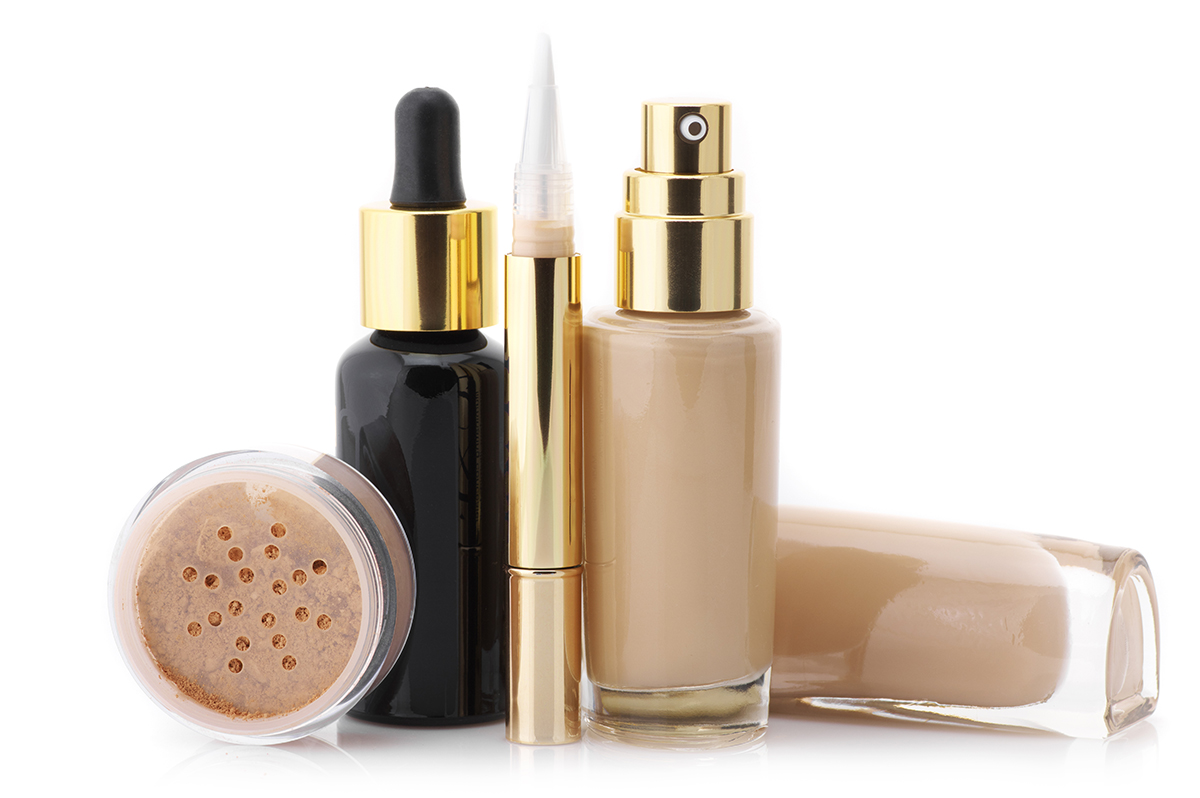Boston Makeup Artist Noel McKinnon Explains Foundation and Concealer

Makeup photo via Shutterstock
With all those photos popping at your bridal shower, bachelorette party, engagement photos, and big day, there’s no time for uneven skin tone, red patches, under-eye circles, or blemishes. Can we get an amen?
Boston makeup artist Noel McKinnon typically uses airbrush foundation for her brides, but keeps MAC concealer palette and Maybeline’s FIT Me! Matte & Poreless foundation for those pesky fixer-upper moments. Here’s what she had to say about the differences between foundation and concealer, and how to choose the right ones for you.
Don’t foundation and concealer do the same thing?
A foundation, as its name suggests, puts a firm base to your makeup along with making your skin tone look even. A concealer does just that—it conceals. So it’s primarily used as a liquid to cover up blemishes and scars. It’s used only on specific areas that you want to hide, like dark undereye circles, pimples, and other little scars on your skin.
What’s the trick to finding the right foundation shade?
When testing foundation shades, it’s critical to identify your underlying skin tone and find a foundation that matches it. This can be tricky because your underlying color isn’t always what you see on the surface. For example, you may have a ruddy (red) or ashen (gray) skin tone on the surface, but your underlying skin tone is actually slightly yellow to beige. I usually tell my brides to look under their chin in the neck area to find this undertone because it gets the least amount of sun, so it’s your most natural skin. You want to neutralize whatever overtones are present with a neutral to slightly yellow-toned foundation, matching the skin’s natural undertone.
Why are some concealers actually yellow or green?
It’s because you can you use color to even out skin tone. To neutralize purplish dark circles, choose a yellow or orange-yellow-based concealer. Fair skin tones, which are prone to more of a green-based under-eye discoloration, use a mauve-rose corrector. For sun spots or freckles, choose a peachy apricot. For redness or blemishes, a green or yellow should do the trick.
Do you need to use tools to apply either of these, or can you use your fingers?
There are three different ways you can apply foundation and concealer—with your fingers, a Beauty Blender sponge, or a brush. They all have their own benefits. Putting on your makeup with your fingers allows the product to warm up, so it blends better. Applying with a brush can help keep the spread of bacteria (and therefore acne) to a minimum. My personal favorite is the Beauty Blender, but I don’t think they can be cleaned well enough, so I avoid using them on clients.
How do you use concealer, once you’ve applied your foundation?
Use concealer after foundation because the foundation keeps the concealer crease-free. Look for a lightweight liquid in a color only one shade lighter than your skin. Use a small, pointy concealer brush to cover the darkest part of under-eye circles—usually right below the inner and outer corners. If other little skin flaws aren’t quite covered by your foundation, dab on a tiny bit of concealer there too.
What stories do you want to see in Boston Weddings? Send us tips at weddings@bostonmagazine.com.
Getting married? Start and end your wedding planning journey with Boston Weddings' guide to the best wedding vendors in the city.


